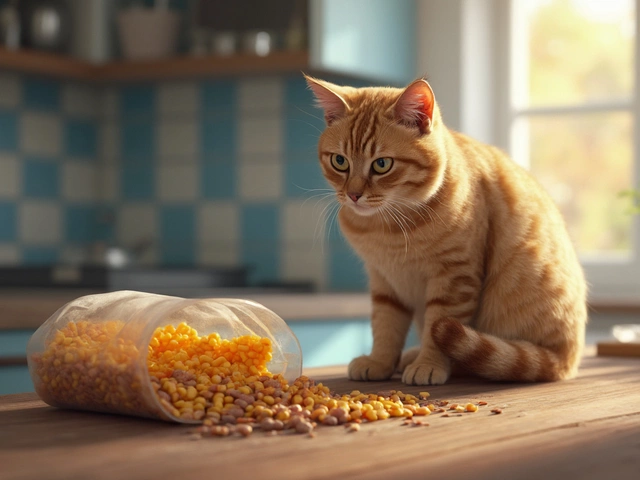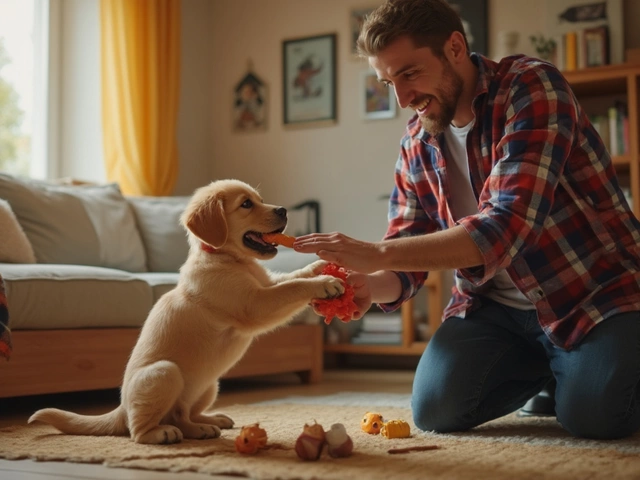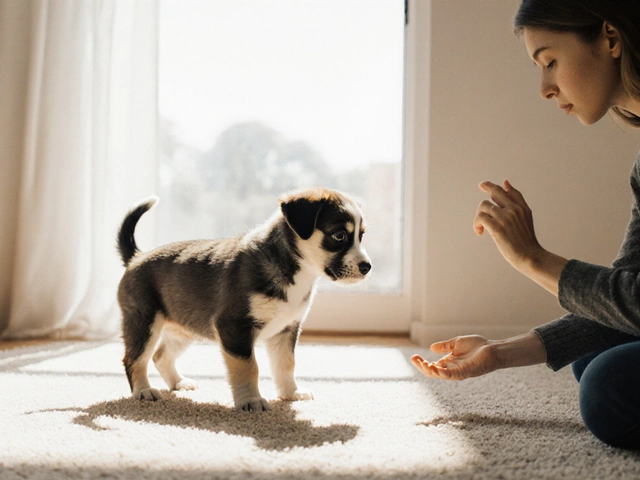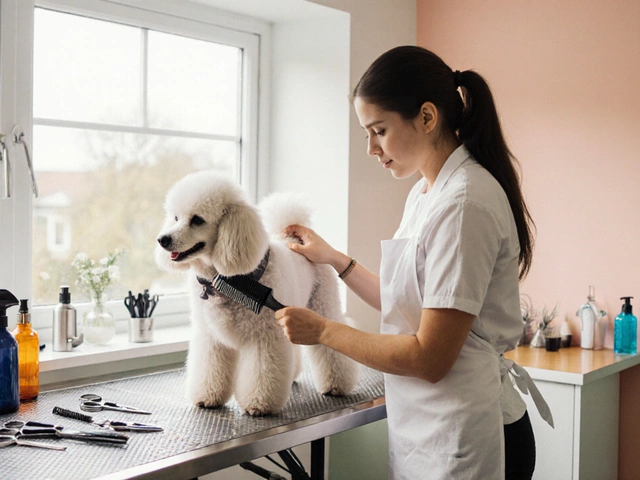Ever seen a litter of pups and noticed one that's oddly flat, soggy, and just not like the rest? That’s the sort of thing that triggers the most basic protective instincts, and honestly, nothing says panic for new puppy parents quite like a limp, floppy body that looks like it can’t get up off the whelping box. But this isn’t just a clumsy newborn; you could be staring at a real medical situation. They call it “wet puppy syndrome.” The name alone sounds bizarre, but the reality is weirder and a lot more stressful than you might expect. Nobody tells you about this in the Instagram-filtered world of puppy posts. But here’s what you need to really know—because if you love dogs (or ever plan to raise a litter), this is the stuff nobody wants to talk about until it happens.
What Is Wet Puppy Syndrome?
The phrase “wet puppy syndrome” refers to a developmental disorder where newborn pups end up with super floppy muscles, sometimes can’t stand, and collapse like a little pancake. They literally feel ‘wet’ to the touch—not because of water or anything gross, but because they’re so soft and have little muscle tone. The name might make you chuckle for half a second, but there’s no humor when you’re watching a tiny life struggle to lift its head or drag itself over to its siblings for warmth. What’s really happening? Researchers believe this syndrome is a mix of genetic force (some breeds get it more often, especially flat-faced dogs) and a bit of bad luck. No single gene to blame; most cases pop up randomly, although certain lines and breeds—think Bulldogs, Frenchies, and the like—seem to take the hit more than others.
You might wonder: What’s it look like? So, that little puppy will often splay out with legs pointing awkwardly away from their belly, like a frog doing a split. Instead of popping up on all fours to nurse, they just sort of flop and slide. They’re unusually lethargic, sometimes shiny (almost greasy) in appearance, and noticeably smaller or weaker than the rest of the litter. They may cry, but it sounds weak. The true punch: they can’t compete for milk, so unless you help, they’ll fall dangerously behind. Some people call these puppies “swimmers,” which is partly due to the way their limbs just flutter against the ground when they try moving. For years, people argued about the cause: was it environmental, something to do with birthing, diet, or bedding? The leading veterinary consensus now is that the disorder starts in early muscle and nerve development—a kind of puppy version of a bad system reboot right out of the womb.
Sometimes, breeders notice that these pups feel almost ‘floppy’ like overcooked pasta and their chests may flatten because the weight of their bodies, unsupported by muscle tone, puts weird pressure on their ribcage. If left like this, the bone deformity known as ‘pectus excavatum’ (a sunken chest wall) can show up after just a few days. As weird as it all sounds, wet puppy syndrome shows up in about 1 out of every 200 live births, based on data from canine reproductive specialists surveyed in the US and Europe in 2023 (see table below).
| Breed | Reported Incidence per 1000 Births |
|---|---|
| English Bulldog | 14 |
| French Bulldog | 11 |
| Golden Retriever | 2 |
| Labrador Retriever | 1 |
| Others (average) | 2 |
Bottom line: most puppies recover with early care, but some never quite bounce back. Early intervention can mean the difference between life and death, and—if you’re willing to step up—your hands may be the only shot this little one’s got.

How To Spot Wet Puppy Syndrome Early
You walk into the room and spot a puppy who hasn’t moved since you last checked. Its siblings are rolling over each other, but this one looks like a failed pancake. That’s your red flag moment. The hardest part is figuring out what’s normal. Puppies are not Olympic athletes in week one, but a healthy one should be able to scramble for mom’s milk when hungry. The wet puppy, meanwhile, slides backward, legs out like flippers—unable to generate the controlled energy needed to keep up.
Key signs to watch for:
- The puppy feels limp when picked up, almost boneless (think jelly, not steak).
- Legs splayed sideways instead of tucked under the belly—picture a tadpole more than a puppy.
- Chest looks flattened or wide, not barrel-shaped like its littermates.
- Low or no weight gain over 24 hours (weigh your puppies daily, always).
- Difficulty nursing: the pup gets pushed aside and gives up easily.
- Quiet, weak, or interrupted cries compared to others in the litter.
- Sometimes an odd slick, almost greasy skin texture—described by breeders as “slippery.”
If you’re seeing two or more of these signs, you’ve likely got wet puppy syndrome on your hands. Now what? First, resist the urge to panic. The easiest trap is to blame yourself, but this is rarely something you caused by accident. It’s just a straight-up quirk of biology most of the time. Early detection is everything. Research from the Canine Health Foundation (CHIC database, 2024) confirms that pups supported within the first 48 hours have double the survival rate compared to those left longer. So, that’s your clock ticking.
Get hands-on with these tactics right away:
- Move the affected puppy onto a grippy towel with good traction, not slick newspaper or plastic bedding. This gives them something to push against instead of sliding.
- Flip them regularly—like every hour—onto their belly, gently tucking their legs underneath.
- If the chest is getting flat, you can build a little “donut” roll of soft fabric for the puppy to lie in (keeps the chest off the floor and relieves pressure).
- Supervised physical therapy: Gently fold each limb toward the body, then back out, a few times every few hours. Think of it as puppy yoga—this keeps the muscles from shriveling.
- If the pup can’t nurse well, supplement with puppy formula, but keep the feedings small and frequent—every 2-3 hours is solid.
- Track everything: weight, food intake, activity. There’s no such thing as “too obsessive” when it comes to struggling puppies.
I’ll tell you, nothing bonds a family more than tag-teaming round-the-clock feeding of a tiny fighter. My own kid, Gideon, learned the value of patience from bottle feeding a stubborn bulldog pup at 2AM (and hiding it in his hoodie so I wouldn’t notice)—so there’s a silver lining for the family, if not your sleep schedule.
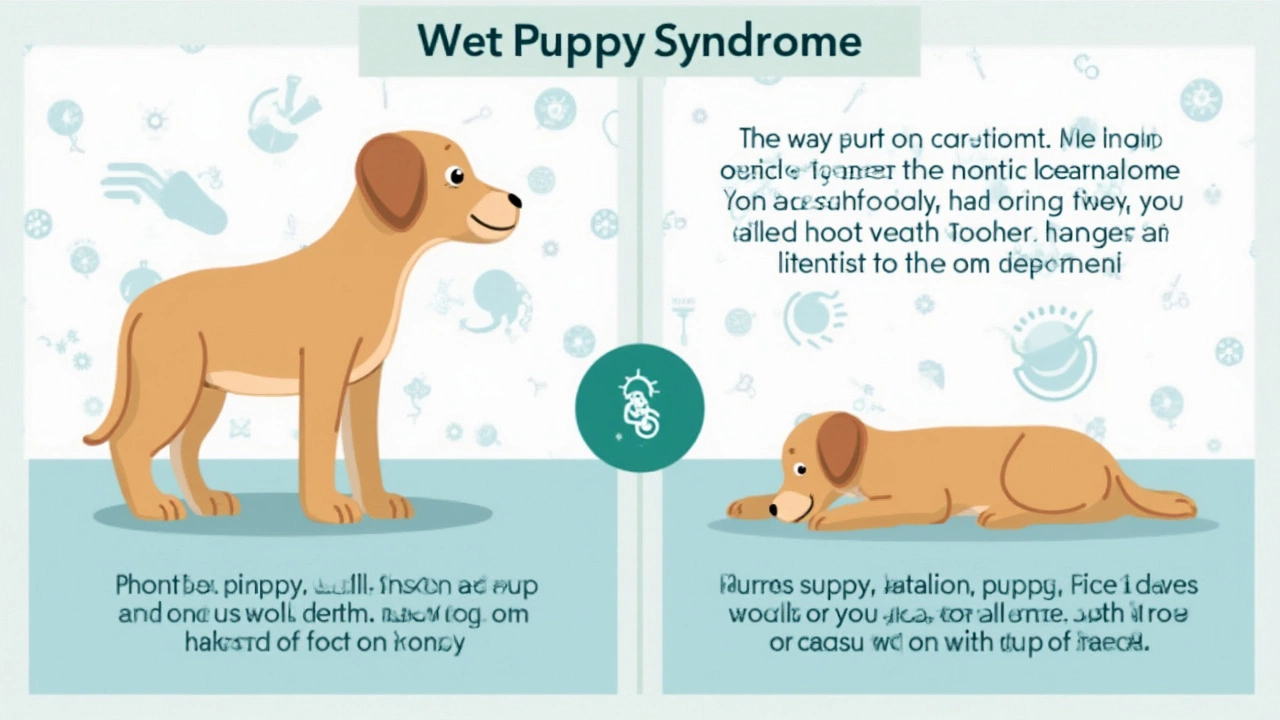
Managing Wet Puppy Syndrome Long-Term and Giving Puppies Their Best Shot
If you’ve made it through the first few days, give yourself some credit—but don’t relax just yet. Recovery is rarely smooth sailing. Affected pups often lag behind in muscle tone, strength, and sometimes even social skills for weeks. They need a different playbook than their healthy siblings.
Long-term management comes down to three key pillars: Physical therapy, environment, and nutrition. On the physical side, daily exercises are the doggy equivalent of baby Pilates. Pick the puppy up every couple of hours, gently flexing and extending each leg. Encourage movement on textured surfaces (think yoga mat or bumpy towel). If you see progress after a week—like actual, real crawling—you’re probably winning.
On the environmental side, keep the whelping area warm (but not too hot), dry, and non-slippery. Wet puppy syndrome can morph into joint deformities or pneumonia if the puppy gets chilled or can’t lift their head to escape soiled bedding. Have a routine where you check the pup every hour or so—the difference from day to day can be dramatic but very easy to miss. Space for the puppy to move, but not get trampled, matters. Some breeders create mini-pens inside the box just for therapy breaks.
Nutrition is the easiest to mess up. Don’t overfeed, but don’t skimp. If the puppy falls behind, try goat’s milk or reputable puppy formula. Some breeders (and at least one vet I know) swear by adding a touch of colostrum supplement in the first 72 hours for better immune support. Recent canine pediatric studies (Journal of Veterinary Internal Medicine, Nov 2024) noted that 91% of wet puppy syndrome survivors were supplemented by hand at least twice daily for two weeks. So, keep feeding regular, warm, but not hot, and never force-feed faster than a slow-drip bottle or syringe allows.
It’s not all bad news. Many puppies make a full recovery and live happy, normal lives. Others have a limp or a quirky walk—kind of like a kid with a lazy eye, it’s a mark of survival rather than anything to worry about. Some breeders will avoid repeating matings between the same pair if a litter produces even one wet puppy, just in case there’s a genetic link. Evidence is mixed, but better safe than sorry, right?
And here’s something few people talk about: even if a wet puppy doesn’t ‘make it,’ the effort you put in teaches compassion, patience, and a raw kind of hope that changes the way you see every dog going forward. Statistically, interventions work best before five days old; every hour after day three without help drops the odds of survival by about 8% according to 2024 European Kennel Club surveys. Don’t skip the vet, either. Passing off “just give it time” is risky. Puppies with chest deformities might still need specialist care or surgery as adults (rare, but possible).
So next time you meet the oddly flat puppy—or your own dog whelps a litter, and you spot that weird limp body—remember it’s not your fault. Sometimes biology rolls the dice, but a calm pair of hands, grippy towels, some milk, and a bit of patience can rewrite the entire story for one of these tiny underdogs. And long after the anxious nights fade, you’ll realize you helped create one of the purest comeback stories in the dog world.



